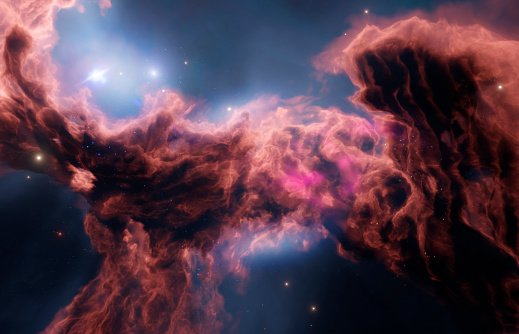Noble gases are a group of chemical elements with the same properties. They are all odorless, colorless, and monatomic gases with very low chemical reactivity when put under standard conditions. They are scarce, and they include Helium (He), neon (Ne), argon (Ar), krypton (Kr), xenon (Xe), and radioactive radon (Rn). They are also called inert gases and are sometimes referred to as aerogens. The inertness makes them suitable for applications where no reaction is needed.
1. Cooling factor
noble gases are used as a coolant in various manufacturing due to their high heat and thermal conductivity. In the manufacture of fiber optic cables, their inertness makes them ideal for cooling silica strands rapidly in the cooling tube as glass fibers are drawn from glass preform.
2. Used in air balloons or aerostatics
Due to the lightness of some noble gases, they are used as lift gases for balloons, meteorological balloons, airships, and blimps. Their non-flammability makes them best-suitable over other light gases.

3. Used in photographic flashes.
Noble gases, like krypton, are used in photographic flashes for prime-speed photographs. Some noble gases, such as xenon, emit instant intense light when present in discharge tubes, thus utilized in high-speed electronic flash bulbs used by photographers.
4. Treatment facilities
Krypton-85, a metastable isotope of inert krypton gas, is employed in medical facilities specifically for respiratory organ ventilation/perfusion scans. Whenever it is inhaled, it can be imaged with a gamma camera. Xenon lamps are used in treatment facilities to kill bacteria. Also, a mixture of oxygen and xenon increases the number of RBCs in human blood. Most noble gases are used in hospitals for the scanning and imaging body organs. Examples are krypton in MRI and eye treatments.
5. Document preservation
The inert nature of noble gases finds another effective use in preserving old documentation. Inertness enables them to provide a protective environment /atmosphere that prevents the degradation and damage of documents storage and display.
6. Used in deep-sea divers
Deep-sea divers and other people who work under high pressure use a mixture of oxygen and Helium. When inhaled, Helium dissolves in small quantities in the bloodstream making it more convenient for people working under high pressure.

7. Spacecraft
Xenon noble gas ion propulsion systems are used by some satellites to keep them in orbit. They also are used in some other spacecraft.
8. Satellites
A noble gas, krypton, is used in many small satellites of space X Starlink as fuel for hall thrusters in their electronic propulsion system.
9. Food and Drink industry
Due to the inertness of the noble gases, they are used in the food and drink industries for preservation. In drink industries, they are added to drinks to replace air preventing them from souring or oxidizing. In food industries where food is packed, they are used to replace the air inside, keeping the food in a good state for a long time.
10. Build up indoors
High concentrations of radon gas can be used to build indoors, escaping from the ground.
11. Signs and billboards
Some noble gases are used in making signs. This is because they glow when an electric current passes through them. A mixture of mercury, argon, and neon produces desired colors when electric light is passed through them. Krypton is used in signboards due to its nature to glow when light is passed through, making it more visible.
12. Home fixtures: double-glazed windows
Argon has been used in homes for thermal insulation in energy-efficient windows, especially double-glazed ones, to fill the space between the panes.
13. Used in light bulbs lasers
Noble gases are used as working gases in lasers and lighting. Helium, for example, is used in gas lasers such as helium-neon and CO2 lasers. Different lasers with working gas as noble gases are used in applications like scientific research, barcode scanning, laser eye surgery, etc. noble gases are also used in gas discharge lamps that omit different colors and are used in various application areas such as the use by artists for special purpose lighting. Other gases used are krypton and neon gas.

14. Used in welding
Noble gases, such as Helium and argon, are applied as shielding gas in arc welding and plasma arc welding because of their highest ionization potential of any atom. The protective atmosphere created by the noble gases around the welding site prevents the metal from oxidizing in the molten state. Plasma arc welding of exotic metals, such as titanium, magnesium, and aluminum, enables the use of the high ionization potential of noble gases, mostly Helium, to be used in construction, shipbuilding, and aerospace.
15. Creation of an inert atmosphere
Noble gases are used to create an inert atmosphere in industries manufacturing that requires high heat and thermal conductivity, such as aluminum manufacturing. Their inert property contributes to their suitability and high electrical and thermal conductivity in this application.
16. Landscaping and interior design
Some noble gases applied in lasers and lighting produce/glow into different colors, making attractive scenes when used in interior designs like houses.
17. Used in cryogenics
Noble gases, such as Helium, are used as a super coolant for cryogenics applications such as Nuclear Magnetic Resonance (NMR) spectroscopy, Superconducting Quantum Interference Device (SQUID), Superconducting Magnetic Energy Storage (SMES0), and power transmission. Helium cools low-temperature conducting materials and low-temperature superconducting magnets to a temperature close to absolute zero lowering the electrical resistance of the superconductors to zero.
18. Manufacturing of semiconductors
Krypton, though a noble gas, reacts with fluorine to produce a compound called krypton fluoride, which is used in lasers to manufacture semiconductors and integrated circuit boards.
Argon, on the other hand, is used to create oxygen-less environments necessary for growing semiconductor crystals.
19. Tracking air masses
Radon gas varies with soil type and surface uranium content; thus, it can be used to track air masses to a certain limited degree.
20. Hydrologic research
One of the noble gases, radon, is used in hydrological research that studies the interaction between groundwater and streams. Due to the rapid loss of radon to air and decay, its Significant concentration in a stream is an indicator of local inputs in the groundwater.
21. Airplanes/aircraft beacons
Noble gases, specifically neon gas, can penetrate the fog that other lights cannot detect. By this, they form a valuable lighting system in extremely cold climates and hence are suitable and applied in airplanes and are used primarily in landing.




